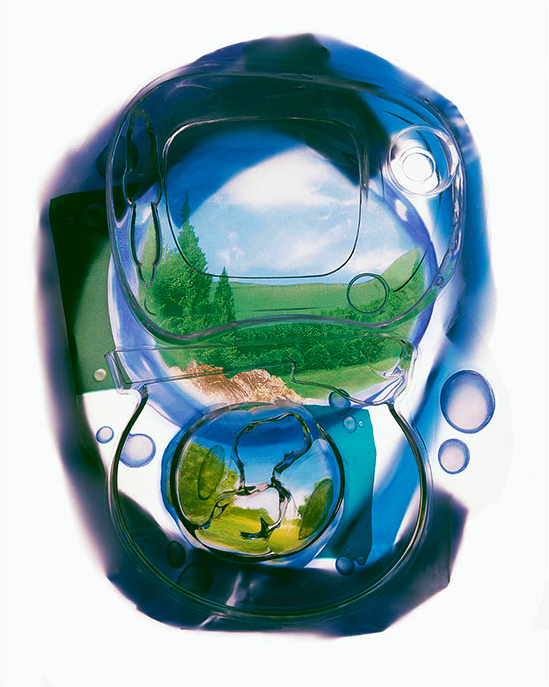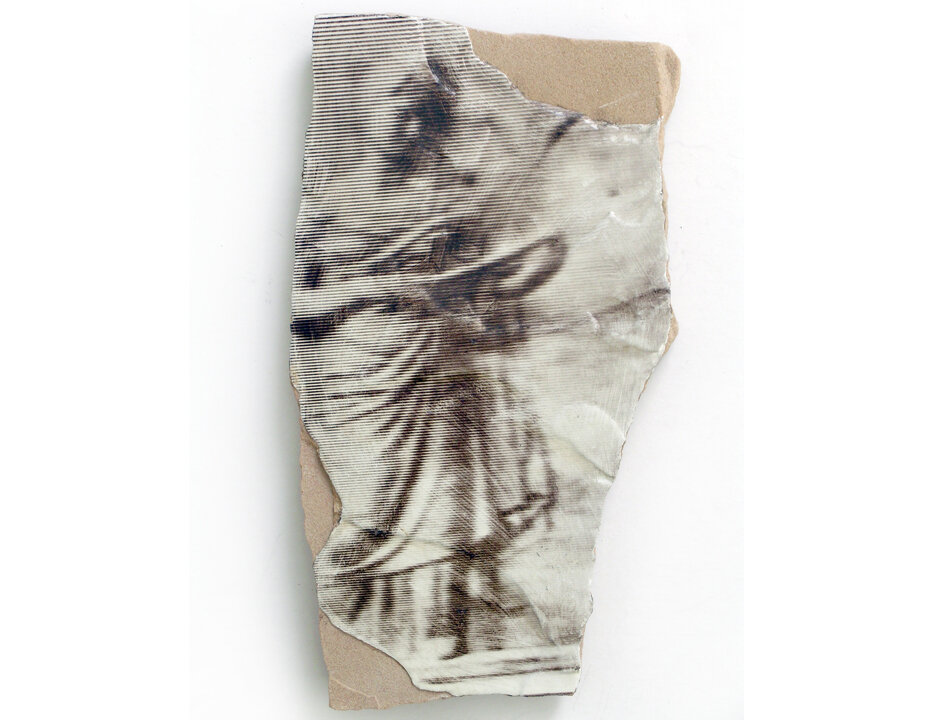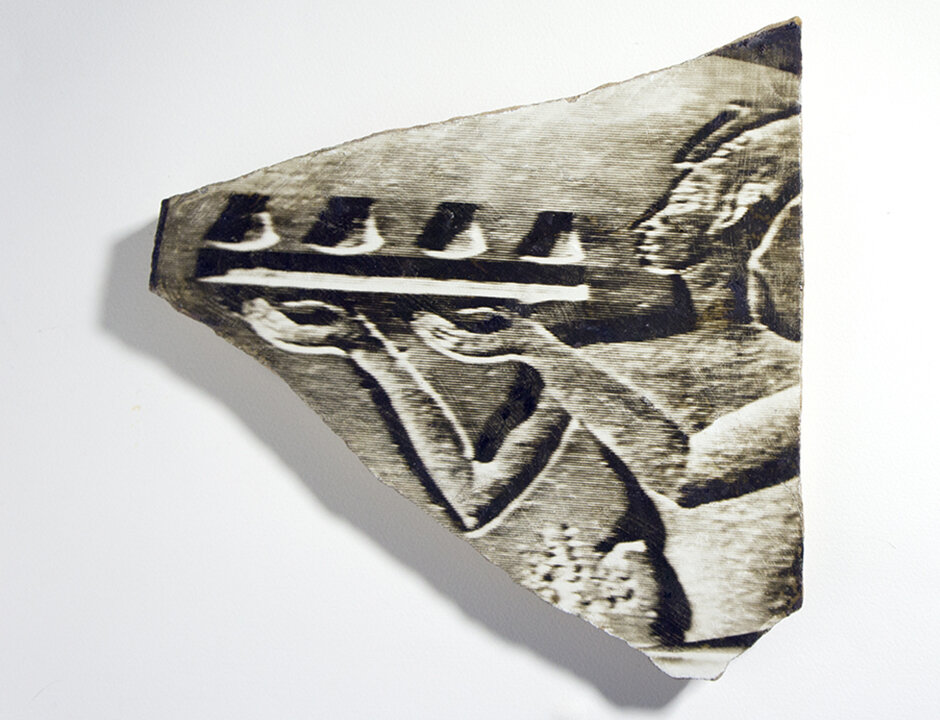Continuing last month’s interview with Denver-based media artist Gary Emrich …
RJ: What do you consider your first significant show?
GE: I don’t think I appreciated the immensity of it at the time, but when the Denver Art Museum bought Spinach Pasta and showed it in the Ponti Building in 1980, that was pretty cool. Color Photographs from the Collection (1980) included a photograph of mine that Dianne Vanderlip bought out of Ken Peterson’s Multiple Exposure show at the 15th Street Gallery in 1980. No one has seen it since 1980, but I know it’s in the collection, as is another large liquid light grid piece that Dianne bought in 1983. Showing Gray Zone in the Biennial at the museum in 1983 was a really significant thing for me.
RJ: What has been your experience with regional galleries?
GE: I’d been showing at 2C and Spark (both collectives) and Sebastian-Moore downtown. John Grant was definitely a major player in photo, but I never really wanted to show in a photo gallery. I curated the first video art show in Denver at Sebastian-Moore. That was about 1983. I showed a Baldessari, Michael Smith, couple of friends from Chicago, Tony Oursler—he’d come to Chicago for a semester in the video program. And then in 1985 a really important Denver sculptor Brian Dreith and I did Transvision, the first big video installation at the Arvada Center. [see Part One for images.]
GE: There used to be a gallery in the Ponti Building called The Close Range Gallery, and it was made for regional artists. It had a show called First Sightings that I was in, in 1991, and a show called Egypt of the Mind in 1998, put together by Jane Fudge. Jane was very supportive of me. In 1989 I started showing at Robischon. The first show I had there was Fabricated and Photographed. They were down on 17th & Downing at the time. The remarkable thing about Jim and Jennifer was they let me do stuff they knew nobody was going to buy. I did a video installation there called Image Conscious (1998). I showed them some concept materials, but by the time I got it up it had a video with this big hunking projector, had John Elway in it—it was really amazing they let me do that.
RJ: How big a role does contemporary art theory play in conceiving your work?
GE: I’m a big fan of going to hear artists talk about their work. I think it’s just the greatest thing you can do. Helps you understand your work and puts it in perspective, so I’ve always liked those sort of things. The book of Nathan Lyons’ that people talk about is Notations in Passing. His interest in photography was about sequencing, how multiple images put in the right order tell a visual story. More than one individual picture being important it’s about an arrangement of pictures. And so many of us teach in that way—how this picture informs this one informs this one; you’re not trying to get the best picture, you’re trying to get a bunch of good ones.
Gary Emrich: Above: Firewater. installation photo showing (l-r) Cowboy with Deep Rock and Marshall with Refreshe Spring. Below, L-R: Lawyer with Ice Mountain; Molly Brown with Arrowhead; Photographer with Ozarka Spring; Highwayman with Evian.
RJ: Let’s talk about current work. All Consumed (ongoing) concerns water, which is a massively important issue in the West.
GE: My interest in water comes from being a Coloradan and knowing that we are so vital for providing water for everyone in the West. How water rights are bought and sold is a thing of real political interest to me, and it’s in a lot of work that I’ve done. I did a body of work called Firewater before All Consumed where I used bottled water labels and these kitschy cliché liquor decanters of western tropes: The Cowboy, The Prospector, that sort of thing. And then I did a video in ‘92 that I really like called Great Western Water Trick. As more people live in the West and with climate change, water’s going to be even more of a commodity.
I see a time in which water is bought and sold literally as a commodity, not just the rights. So my original concern was about the value of water. Then, when I combined the plastic blister packs that hold the bottles, I realized that I was taking those first two things that we throw away, the packaging, and by doing that I could talk about how this plastic world, dealing with water, is just ridiculous. I mean, we do fifty billion bottles of water a year in this country.
RJ: Unbelievable.
GE: Right now I’m trying to figure out this other body of work. I acquired 10,000 photographs from a newspaper from the twenties through the sixties. I got them twenty-five years ago. A lot of people have used found photos, and of course I’m trying to find a way to use them in ways that nobody else has. I went through and sorted them all into categories once years ago. There’s a lot of crime, a lot of sports and people in uniforms and that kind of thing.
RJ: It sounds like a Larry Sultan and Mike Mandel project.
GE: Which was another thing that I was totally blown away by. When I saw Evidence I knew exactly what they were doing and I totally loved it. Actually, I was in San Francisco in 1978 when they had their show in some museum. And that was one of the first photo books I bought.
RJ: Evidence brings to mind the emphasis on conceptual thinking you experienced in Chicago. For instance, you’ve mentioned perspective during this interview, which is something you’ve always employed to great effect.
GE: You had asked about Paul Berger earlier. He made these wonderful photographs in mathematic classrooms of the chalk boards filled with formulas. They were just marks and the images were completely flat. I really responded to them because of their absolute flatness. Whether I have photographed off an old black and white TV which I did for years or arranged things and then photographed them, I am most comfortable with denying three-point perspective. I usually achieve this by photographing straight down. Even when I was photographing on the street I would find myself getting on top of parking garages and photographing down. I think there's some logic in that.
Gary Emrich: Crisis Management, ca. 1994. Photo emulsion on flagstone.
RJ: And what about materials? You've worked with so many kinds during your career.
GE: One thing I am very interested in is process. How the materials I chose inform the artwork. I usually come up with an idea or concept and think, "what materials should I use to resolve this?"
RJ: Which brings me back to Egypt of the Mind at the DAM. Jane Fudge, the show’s curator, described your work in the show as, “Egyptian photographic images derived from that most elusive and often vexing art form video.” That’s quite intriguing. [1]
GE: So, the work of mine in that exhibition was liquid photo emulsion on flagstone—they were Egyptian hieroglyphic pieces that I had recorded video of at a show about hieroglyphs, and then rephotographed and put back on stone. It was a classic trompe l’oeil thing. It was a classic trompe l’oeil thing. But even at that time I was torn, because I thought I was appropriating somebody else’s culture. I used a lot of Greek and Roman imagery too, because I felt like that was my culture, whereas Egypt really wasn’t.
RJ From looking at your web site, this was part of a bigger series exploring how materials were put together.
GE: In the end, I do have one constant in my work; I've always made pictures of other pictures.
I like taking objects, materials, and pictures out of context and putting them in my own narrative. It has been the one constant in my work for forty years.
END
Interview recorded during April 2017 & February 2021. Transcript edited in July 2021.
[1] Jane Fudge, catalog essay for “Egypt of the Mind,” at the Close Range Gallery, Denver Art Museum, April 25–September 27, 1998.
The Colorado Photo History blog is the online presence for “Outside Influence,” a book project by Rupert Jenkins. As always, please leave a comment or a suggestion for future posts, and visit #Colorado Photo History on Instagram and Facebook.
@coloradophotohistory. #coloradophotohistory #outsideinfluence #emrich @garyemrich #newterritory #videoart #apollo #allconsumed #denverartmuseum @robischongallery












